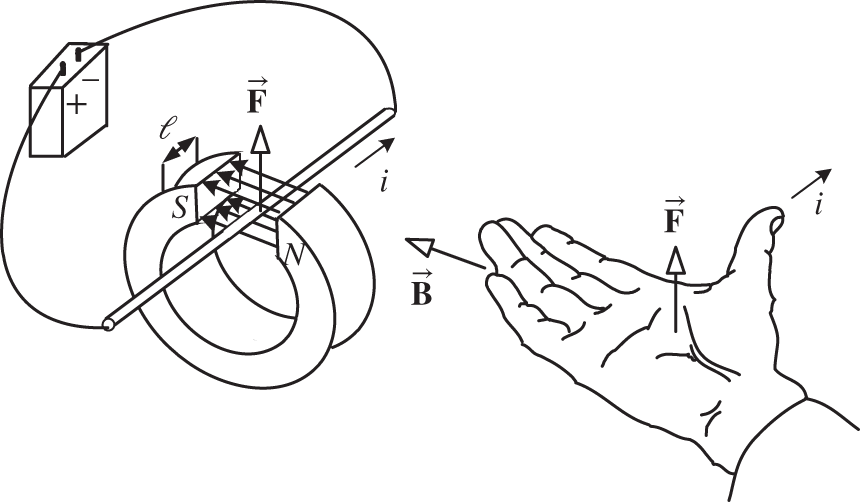6The Physics of the DC Motor
The principles of operation of a direct current (DC) motor are presented based on fundamental concepts from electricity and magnetism contained in any basic physics course. In order to do this we review the concepts of magnetic fields, magnetic force, Faraday's law, and induced electromotive forces (emfs) as they apply to modeling the DC motor. All of the physics concepts referred to in this chapter are contained in the book Physics by Halliday and Resnick [18].
6.1 Magnetic Force
Motors work on the basic principle that magnetic fields produce forces on wires carrying a current. In fact, this experimental phenomenon is what is used to define the magnetic field. If one places a current carrying wire between the poles of a magnet as in Figure 6.1, a force is exerted on the wire.

Figure 6.1 Magnetic force law.
Source: Adapted from Haber‐Schaim et al. [19]. PSSC Physics, 7th Edition, Kendall/Hunt, Dubuque, IA, 1991.
Experimentally, the magnitude of this force is found to be proportional to both the amount of current ![]() in the wire and to the length
in the wire and to the length ![]() of the wire that is between the poles of the magnet. That is, is proportional to . The direction of the ...
of the wire that is between the poles of the magnet. That is, is proportional to . The direction of the ...
Get An Introduction to System Modeling and Control now with the O’Reilly learning platform.
O’Reilly members experience books, live events, courses curated by job role, and more from O’Reilly and nearly 200 top publishers.

